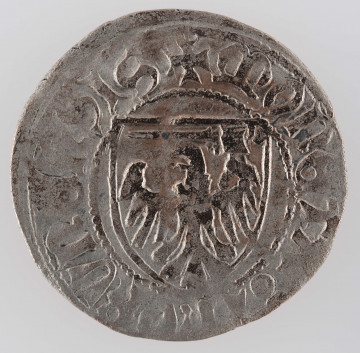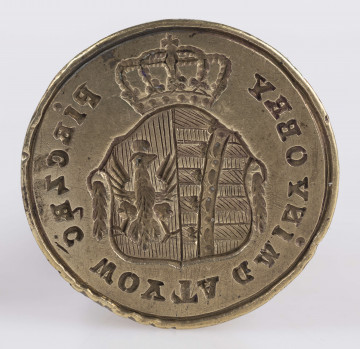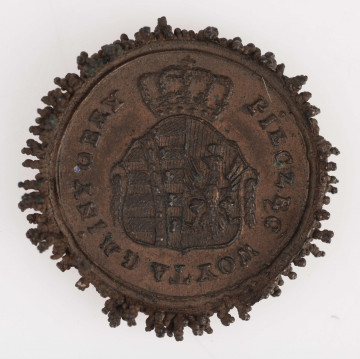
Toruń pfennig of Casimir the Jagiellon
1457 — 1492
National Museum in Lublin
Part of the collection: Money on Polish territory in the Middle Ages
During the Thirteen Years' War with the Teutonic Order (1454-1466), the burden of financing military operations fell most heavily on Prussian towns. As early as 6 March 1454, in the act of incorporation of Prussia into the Crown, Casimir Jagiellon granted four centres the right to mint coins. These were: Torun, Gdansk, Elblag and Königsberg. The main circulating coin was to be the shillings, although denars were also minted. Initially, the coins, due to their high silver content called good shelaige, were minted only in Toruń. They were to circulate in Prussia but were also accepted in the Polish lands. Lack of bullion and increasing financial needs led to the fact that three years later the issue of shillings with a lower silver content began. Gdansk started to mint so called bad shelaige by virtue of additional privilege from 15 May 1457. On the coins was placed a new coat of arms of the city in shape of two crosses under the crown, which Gdansk received from the king in the same year. To manifest the union of the city with Poland, the obverse bore the image of the Jagiellonian eagle with the inscription KASIMIRVS DGR POLONIE (Casimir of God's Grace, King of Poland). On the reverse there was the mentioned new coat of arms of the city with an inscription on the rim, MONETA CIVITA DANCZIK (the coin of Gdańsk), however there were many variations of abbreviations used in both inscriptions. Additionally, numerous mintmarks such as circle, star, rosette, trillium, crescent and lily can be seen on Gdańsk sherds. They were often placed in pairs on the obverse and the reverse in the upper part of the coin. The presented coin is poorly legible in some places, but it can be stated that it has a rosette on the obverse (above the eagle's head) and probably a circle on the reverse (above the crown of the coat of arms of Gdańsk).
Gdańsk, Toruń and Elbląg (Königsberg withdrew from supporting the union with Poland at the beginning of the war) retained the right to mint coins even after the end of hostilities. As a result, they were issued until the 1620s. Due to the differences between the coins minted by individual towns, in 1467, at the convention in Elbląg, a joint resolution was passed to equalise the minting rate. It was also decided that the quality of minted coins would be monitored quarterly. It is not known, however, whether these decisions came into effect.
Leszek Poniewozik
Author / creator
Dimensions
cały obiekt:
Object type
numismatic
Technique
stamp minting
Material
silver
Creation time / dating
Creation / finding place
Owner
The National Museum in Lublin
Identification number
Location / status

1457 — 1492
National Museum in Lublin

1807-1815
National Museum in Lublin

1807-1815
National Museum in Lublin
DISCOVER this TOPIC
National Museum in Lublin
DISCOVER this PATH
Educational path